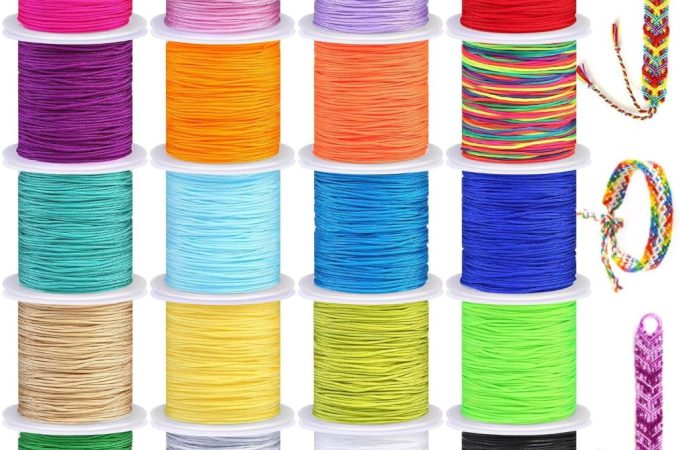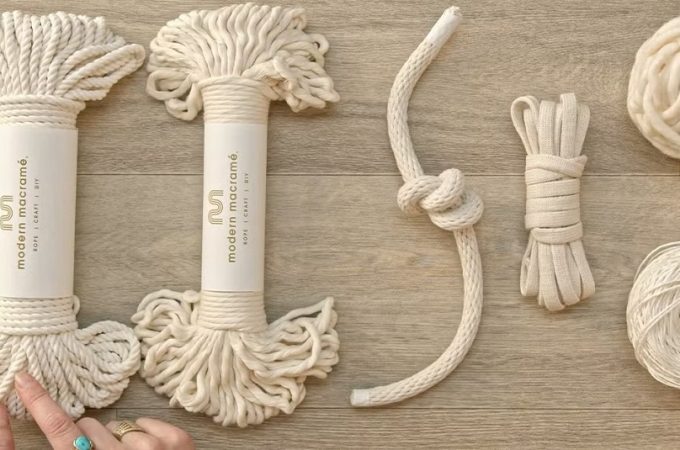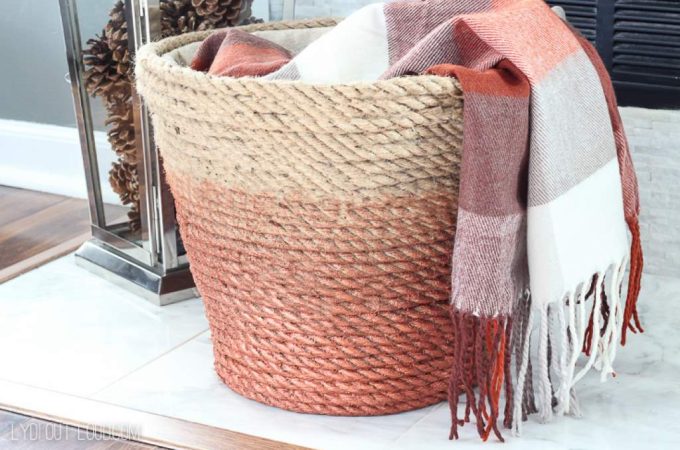
Unleash the Fun: DIY Rope Dog Toys for Hours of Entertainment (and Chewing!)
Dogs love to play, and toys are an essential part of keeping them happy, engaged, and out of trouble. But store-bought toys can be expensive, and sometimes they just don’t hold up to those sharp teeth and powerful jaws. That’s where DIY rope dog toys come in! Not only are they budget-friendly, but they’re also incredibly durable and customizable to your dog’s size and preferences. Plus, making your own toys allows you to ensure they’re safe and free of any harmful chemicals or small parts.
Contents at a Glance
ToggleThis comprehensive guide will equip you with the knowledge and inspiration to create a variety of rope dog toys, from simple tug toys to intricate puzzle games. We’ll also delve into the benefits of rope toys, provide reviews of popular rope materials, and answer frequently asked questions to ensure your DIY project is a howling success.
Why Rope Toys are a Paw-some Choice
Rope toys offer a multitude of benefits for your furry friend, making them a popular choice among dog owners.
Here’s why:
- Dental Health: The fibers in rope toys help to clean teeth and massage gums, reducing plaque and tartar buildup, which can lead to bad breath and dental disease.
- Mental Stimulation: Interactive play with rope toys provides mental stimulation, preventing boredom and reducing destructive behaviors that can arise from pent-up energy.
- Durability: Rope toys are generally very durable, able to withstand even the most enthusiastic chewers. This makes them a great investment that can save you money in the long run.
- Versatility: Rope toys can be used for a variety of activities, from fetch and tug-of-war to solo play and chewing.
- Customizable: DIY rope toys allow you to tailor the size, shape, and complexity to your dog’s individual needs and preferences.
Choosing the Right Rope: A Material World
Selecting the right rope is crucial for creating safe and durable DIY dog toys.
Here’s a breakdown of some popular options:
- Cotton: A natural and affordable option, cotton rope is soft and easy to work with. However, it may not be the most durable choice for aggressive chewers. Look for tightly woven cotton rope with thick strands.
- Manila: Strong and durable, manila rope is a popular choice for dog toys. It’s also relatively inexpensive and readily available at most hardware stores. However, it can be rough on hands, so wearing gloves during crafting is recommended.
- Sisal: Another natural fiber, sisal is incredibly strong and resistant to chewing. It’s a good choice for heavy chewers, but it can be a bit more expensive than other options.
- Nylon: Known for its strength and durability, nylon rope is a great choice for tough chewers. It’s also water-resistant and easy to clean. However, some dogs may find the texture less appealing than natural fibers.
- Climbing Rope: Specifically designed for strength and durability, climbing rope is an excellent choice for heavy-duty chewers. It’s often made from nylon or polyester and comes in various thicknesses and colors.
Important Note: Always choose ropes that are specifically designated as safe for pets. Avoid ropes treated with chemicals or dyes that could be harmful if ingested.
DIY Rope Dog Toy Ideas: Unleash Your Creativity
Now that you’ve got the lowdown on rope materials, let’s dive into some exciting DIY dog toy ideas:
-
The Classic Knotted Rope:
This simple yet effective toy is perfect for both solo play and interactive tug-of-war.
- Materials: 1-2 feet of rope (cotton, manila, or nylon)
- Instructions:
- Tie a secure knot at one end of the rope.
- If desired, tie additional knots along the length of the rope for added texture and chewing satisfaction.
- That’s it! You’ve got a basic rope toy ready for action.
-
The Braided Bully Stick Holder:
Combine the chewing satisfaction of a bully stick with the durability of a rope toy.
- Materials: 1 foot of rope (cotton or manila), 1 bully stick
- Instructions:
- Fold the rope in half and tie a knot at the looped end.
- Braid the two strands of rope together.
- Tie another knot at the end of the braid, leaving a small loop.
- Insert the bully stick through the loop.
-
The Interactive Rope Ball:
This toy provides a challenging and rewarding experience for your dog.
- Materials: Tennis ball, 2-3 feet of rope (nylon or climbing rope)
- Instructions:
- Drill a hole through the tennis ball.
- Thread the rope through the hole and tie a secure knot on the inside of the ball.
- Braid or knot the remaining rope for added interest.
-
The Fleece-Wrapped Rope Tug:
Add a soft and enticing element to your rope toy with a fleece wrap.
- Materials: 1 foot of rope (cotton or Manila), fleece fabric strips
- Instructions:
- Cut several strips of fleece fabric.
- Tie the fleece strips onto the rope at intervals, creating a colorful and textured tug toy.
-
The Challenging Rope Puzzle:
Put your dog’s problem-solving skills to the test with this interactive puzzle.
- Materials: Wooden board, multiple short lengths of rope, treats
- Instructions:
- Drill holes in the wooden board.
- Thread the ropes through the holes, tying knots on the underside.
- Hide treats within the folds of the rope for your dog to discover.
Tips for DIY Success:
- Always supervise your dog while they play with any toy, especially new ones.
- Inspect toys regularly for signs of wear and tear, and discard any that are damaged.
- Choose rope materials that are appropriate for your dog’s chewing habits.
- Get creative with colors, textures, and designs to keep your dog engaged.
- Consider adding bells, squeakers, or other elements to enhance the sensory experience.
Reviews: Top Rope Materials for Dog Toys
To help you make informed decisions, here are reviews of some popular rope materials:
- Cotton Rope:
- Pros: Soft, affordable, easy to work with
- Cons: Not as durable as other options, may fray easily
- Best for: Light chewers, puppies, and dogs who prefer softer textures
- Manila Rope:
- Pros: Strong, durable, readily available
- Cons: Can be rough on hands, may have a strong odor
- Best for: Moderate chewers, tug-of-war, and outdoor play
- Sisal Rope:
- Pros: Incredibly strong, resistant to chewing, natural fiber
- Cons: More expensive than other options, can be rough on hands
- Best for: Heavy chewers, aggressive chewers, and long-lasting toys
- Nylon Rope:
- Pros: Extremely durable, water-resistant, easy to clean
- Cons: Can be slippery, some dogs may not like the texture
- Best for: Heavy chewers, water activities, and dogs who like to tug
- Climbing Rope:
- Pros: Ultimate durability, variety of colors and thicknesses, designed for strength
- Cons: Can be more expensive, may require specialized knots
- Best for: Power chewers, interactive games, and long-lasting toys
Related: Transforming Trash: A Comprehensive Guide to Making Rope from Plastic Bags
FAQ: Your Burning Questions Answered
-
Is it safe for my dog to ingest rope fibers?
While some ingestion of fibers is inevitable with chewing, it’s generally not a cause for concern. However, if you notice your dog excessively swallowing rope fibers or experiencing digestive issues, consult your veterinarian.
-
How do I clean my DIY rope dog toys?
Most rope toys can be hand-washed with mild soap and water. You can also machine wash them on a gentle cycle in a laundry bag. Always air dry thoroughly to prevent mold and mildew.
-
What should I do if my dog destroys a rope toy?
Discard any damaged toys immediately to prevent your dog from ingesting small parts or choking.
-
Can I use any type of rope for dog toys?
No, it’s crucial to choose ropes that are specifically designated as safe for pets. Avoid ropes treated with chemicals or dyes that could be harmful.
-
Where can I find rope for making dog toys?
Rope can be found at hardware stores, craft stores, online retailers, and even marine supply stores.
-
What are some other materials I can use for DIY dog toys?
Besides rope, you can incorporate fleece fabric, tennis balls, old t-shirts, and even recycled denim into your DIY dog toy creations.
-
How can I make my DIY rope toys more challenging for my dog?
Increase the complexity of knots, add puzzle elements, or incorporate hidden treats to keep your dog mentally stimulated.
-
Are DIY rope toys suitable for all dogs?
Yes, but it’s important to choose materials and designs that are appropriate for your dog’s size, age, and chewing habits.
-
Can I sell the DIY rope toys I make?
Yes, you can! Many people have successful businesses selling handmade dog toys. Just ensure you’re using safe materials and following any relevant regulations.
-
What are some other benefits of making DIY dog toys?
DIY dog toys are a great way to bond with your furry friend, reduce waste, and save money. Plus, it’s a fun and rewarding activity!
Conclusion: Crafting Fun and Durable Companions
Creating DIY rope dog toys is a rewarding experience that benefits both you and your four-legged companion. By choosing the right materials and unleashing your creativity, you can provide your dog with hours of entertainment, mental stimulation, and chewing satisfaction. Remember to always prioritize safety and supervise your dog during playtime. With a little effort and imagination, you can craft durable, engaging, and personalized toys that will strengthen the bond with your furry friend. So gather your materials, unleash your inner artist, and let the rope crafting begin!






